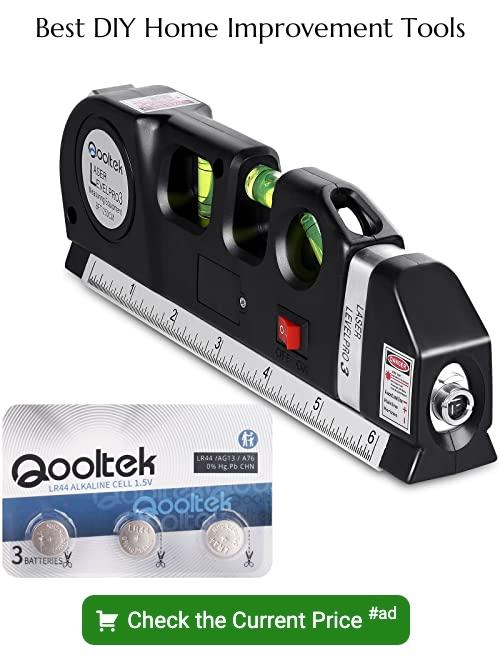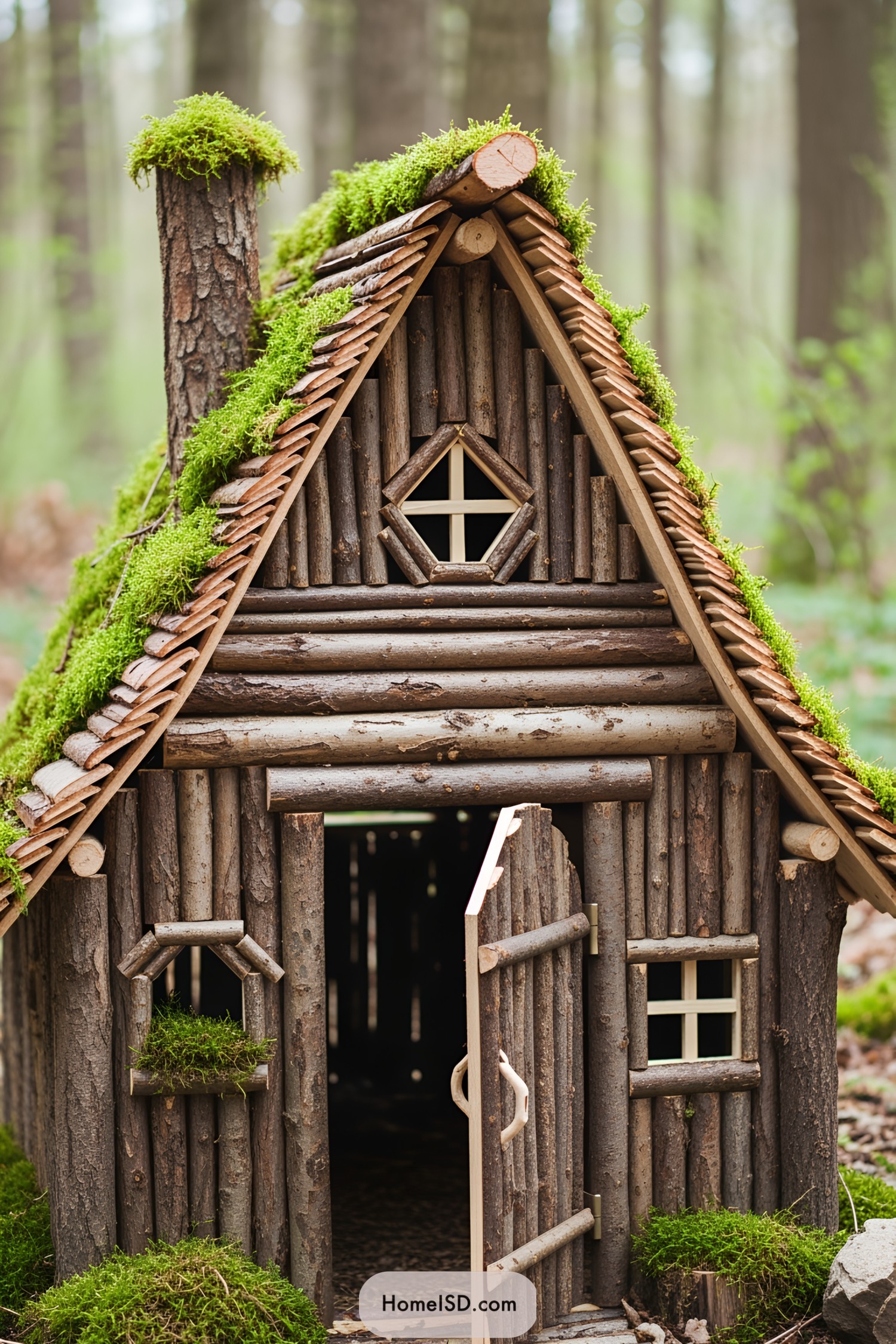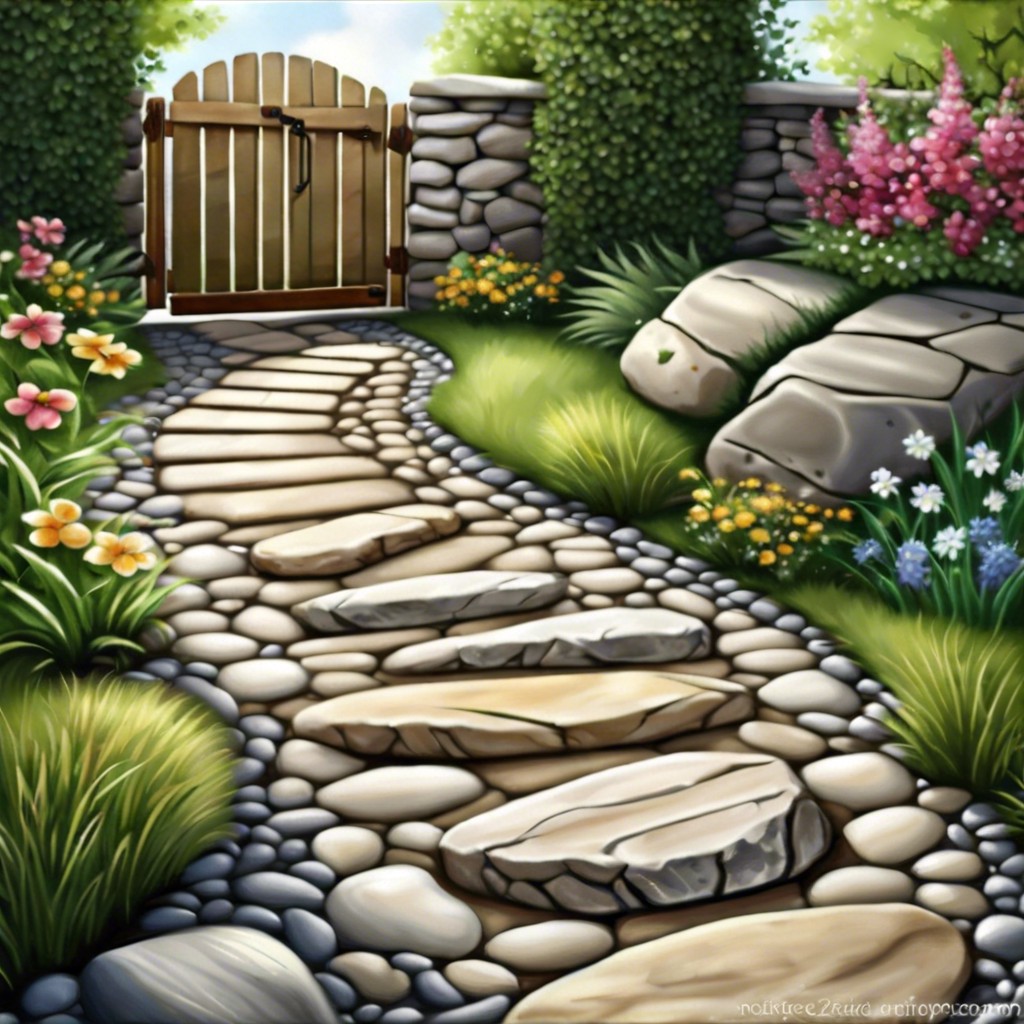Last updated on
These are the top trends and statistics of the DIY industry of 2023 that you need to know. Read on!
Home improvement projects are a great way to refresh your living space and increase the value of your home. These projects are even better when you have the knowledge to do it on your own.
This is because you can complete a job the way you like it, all while saving money. If you’re unsure about where to start with a home improvement project, a great place is at the beginning where it all began.
Top 4 Online Stores by Net Sales
These are the top four online stores for DIY-related products by net sales in 2021: [1]
- Home Depot
- Lowe’s
- Grainger
- Menards
- Harbor Freight Tools
Global Revenue of the Entire DIY Market
The global e-commerce revenue of the entire DIY market was US$413.5 billion in 2019, and it’s projected to grow. [1]
In 2020, the total U.S. home improvement expenditure amounted to 457 billion U.S. dollars, indicating a significant market for DIY projects and home improvements. Homeowners undertake such projects to make residential properties more comfortable and to upgrade various amenities.
In 2021, the U.S. saw an increase in DIY lumberyard sales compared to the previous year, accumulating just under 138 billion U.S. dollars. Home centers also generated roughly over two billion dollars in sales during the same period, highlighting the growth of the DIY market.
COVID-19 Impact
The COVID-19 pandemic has also played a significant role in shaping the DIY market. In 2019, the DIY home improvement world market turnover reached 618 billion euros, surpassing 600 billion euros in sales. North America and Europe combined represented approximately 86.6% of the global market. [5]
Moreover, the DIY home improvement market is expected to register a CAGR of over 5% by 2027, largely influenced by the effects of the pandemic. DIY techniques enable customers to design and modify projects without professional help, and the pandemic has further promoted this trend as people spend more time at home.
Home improvement and renovations in the U.S. alone totaled over 350 billion dollars, with 194 billion of that figure representing the 13 million projects started in 2018 that cost the homeowner over 1,000 dollars. [6]
What DIYers Spend Their Money On?
DIYers spend on average (annually) $1,139 on major home appliances, $1,138 on outdoor living products, and $1,131 on the HVAC system. [4]
Top Purchased DIY Products
The most popular DIY project is painting a room, so no wonder that the top purchased DIY products are interior paint, paint tools (brushes, rollers, pans), and painter’s tape. [4]
Top purchased products for exterior projects are exterior paint, lumber, and roofing (shingles). [4]
Top Hired Services
These are the things DIYers won’t do (due to lack of expertise): lawn services, plumbing, HVAC, pest control. [4]
DIYers by Age
The average age of 25% of DIY product buyers is 55-64 years. [1]
The Most Active DIYers
73% of millennials are DIYing, the other 27% are hiring professionals. [2]
How Many People DIY?
47% of homeowners do it themselves (that’s almost every second person who owns a home). That means the other half of home improvement projects were done by hired professionals. [3]
Interior vs. Exterior DIY
DIYers prefer interior projects over exterior projects (presumably due to their complexity): 77% of projects were interior and only 23% were exterior DIY projects. [3]
The Most Popular DIY Room Renovation
The most popular is the bathroom renovation (26% of projects), followed by a kitchen upgrade (19%) and a complete kitchen renovation (9%). [3]
The Most Popular DIY Exterior Project
The most popular DIY exterior project is roof renovation (35% of projects), followed by vinyl and wood doors (24%), and vinyl siding (26%). [3]
The Top Reason for DIY
35% of people engaging in DIY home renovation projects do it for better functionality, while 19% do it for aesthetics. [3]
Renovations and Remodeling Trends
Home renovation and remodeling projects have recently gained significant popularity among homeowners. This trend is influenced by increased median home values and the desire to improve living spaces. This section will discuss popular DIY projects, value, and spending within the home DIY project market.
Popular DIY Projects
Many homeowners are increasingly looking for ways to personalize their homes and make better use of their living spaces. Some of the most popular DIY projects in the current market include:
- Colorful and calming bathroom renovations
- Meshing indoor-outdoor spaces for a more seamless living experience
- Integrating warmer color tones in interior design
- Creating spaces with more curves and unique shapes
Value and Spending
Home renovations and remodeling projects often come at a cost, but the investment may be well worth it in terms of increased home value. The US housing market has experienced steady growth in national median home values over the past decade. With this in mind, homeowners recognize the potential for further value growth through investment in renovation projects.
The home remodeling market experienced a boom that may peak in 2022.[8] This trend indicates a growing interest in home improvement projects among homeowners. Additionally, it signifies that people are willing to invest in projects to improve their quality of life and increase the value of their properties.
The average cost of a homeowner-initiated renovation or remodeling project can vary greatly depending on factors such as materials, labor, and the project scope. However, investing in high-value projects can help homeowners achieve a greater return on investment when it comes time to sell their properties.
Design Trends
While the term DIY (do it yourself) has been around for years, it began to rise to popularity in the 1950s. Around this time is when homeowners started to take on small craft or construction projects for both recreational and cost-saving purposes.
Over the years, this widespread trend has evolved quite a bit. In the 1950s you saw pastel color schemes. Mint green and cotton candy paint, tile, bathroom fixtures, and kitchen appliances were all the rage. The 1960s saw bright pops of neon, eccentric color combinations, and vinyl flooring, while the 70s brought wood paneling and open-floor plans. The 1980s brought intricate floral wallpaper, and the 90s brought large master suites and all-white kitchens.
Here’s a fun look at the evolution of trends since the 50s:
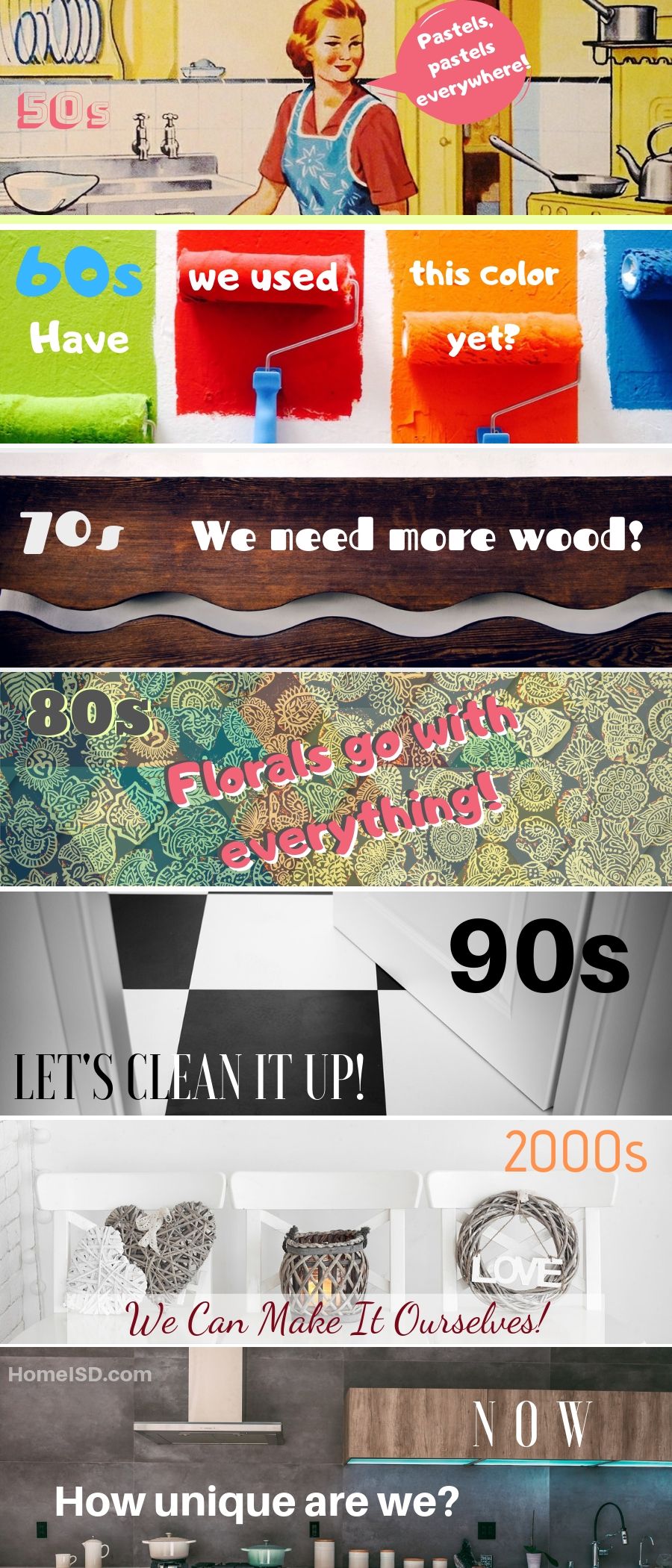
While trends are ever-changing and constantly evolving, they also have a cyclical lifestyle, and you may be asking, where are we now? Each of these trends can be found in homes today, as they each have become increasingly popular again. The direction of DIY home improvement itself is on the rise and is expected to rise by 4.2% by 2022. Research shows that homeowners who choose to complete DIY projects have higher satisfaction with the results.
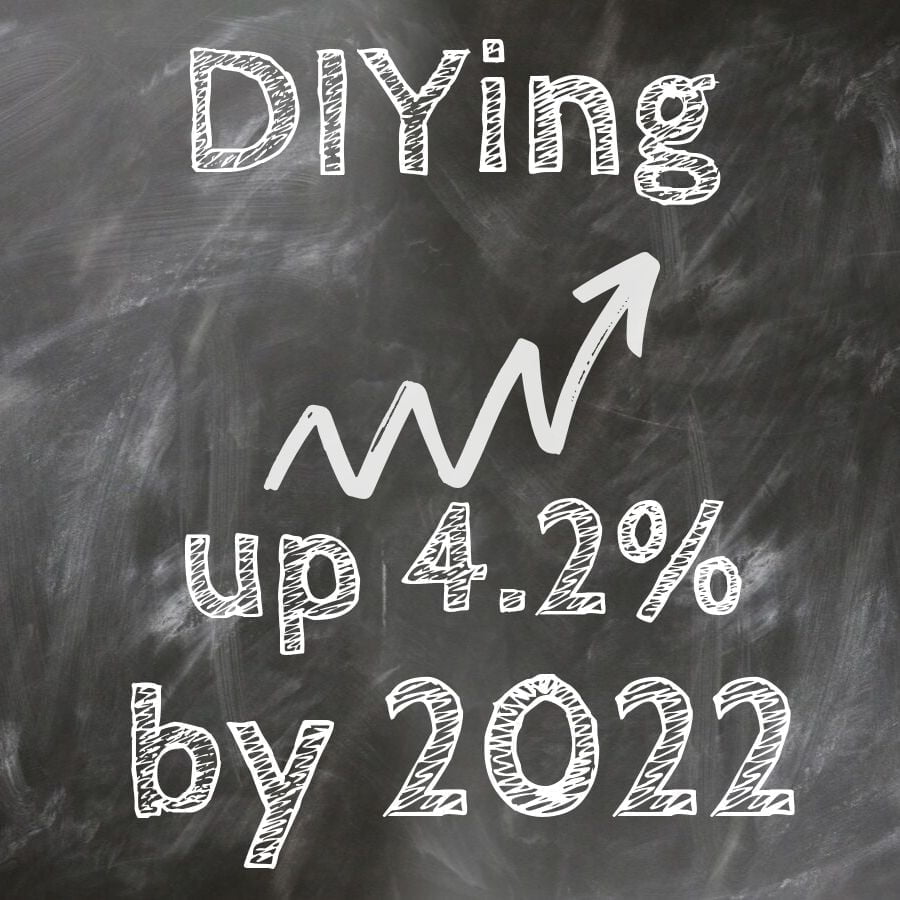
Driving Factors
Homeowners are completing DIY home improvement projects with other things in mind on top of popular decor trends. A few driving forces of the current DIY market are generational differences concerning health and wellness, functionality, aesthetics, damage, and ROI (return on investment). According to the National Association of Realtors, 50% percent of consumers in need of a home improvement project hired a professional, while the other 47% percent completed the project themselves.

You may be thinking to yourself; only forty-seven percent of homeowners are completing DIY projects? While that may seem on the lower end of the spectrum, it’s more than you might think. DIYers are much more likely to be millennials than any other age group. Specifically, 73% of millennials are DIYing, while only 27% are hiring professionals. It’s because this age group of homeowners is wholly engaged in the online world of YouTube and other tutorials to complete their projects. One in four millennials states that they are very skilled at DIY projects, compared to lower percentages from Boomers and Gen-Xers.
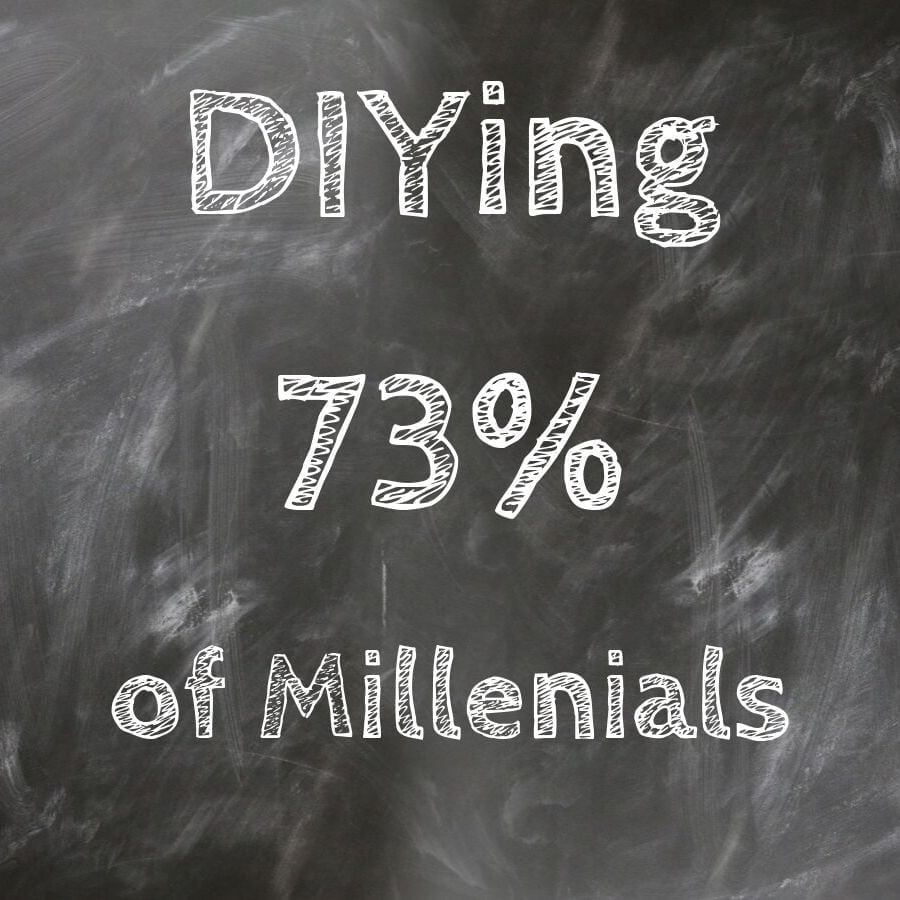
Millennials individually are driven to DIY by aesthetic and damage to their homes. While the lack of home leaves this generation with little to choose from, many are purchasing older homes and renovating themselves. They are motivated by improvement projects that will provide them with the most ROI. Additionally, this generation garners their drive to renovate from cost. Millennials will complete thorough research to ensure the job is completed correctly the first time to avoid mistakes that could cost them more in the long run. Other generations such as Baby Boomers and Generation X are motivated to “modernize” their homes and are more likely to hire professionals due to lack of knowledge but larger budgets.
Spending Habits
Another driving factor for DIY projects is money. Homeowners are now spending more on home improvement projects than ever before. For every $1 spent on home maintenance, homeowners are spending an average of $5 for home improvements. Additionally, the DIY trend is an excellent option for those that have a strict budget and cannot hire costly professionals. It’s more affordable to purchase materials for a project and DIY it than seeking out professional help.
Many homeowners view their houses as an investment and are willing to make upgrades that increase their home value. If you find yourself wondering how much to spend on your home renovations, it’s a good idea to research the average cost of a project. Then you’re able to assess your needs and wants accordingly. Once you have a good idea of what you’re looking to complete for your project, making a budget for home improvement projects will allow for a smooth renovation.
Average Cost Breakdown
Room remodels been the most popular home improvement project to date, specifically big-ticket items such as the kitchen and bathroom. In addition to these projects, homeowners are prioritizing new appliances, roof replacements, and hardwood refinishing to finish off their living spaces. With all this talk of trends, driving factors, and money, it’s essential to know how much you could potentially spend on your home improvements.
It’s no surprise that homeowners want to improve their kitchens; it’s the center of the home where friends and family gather for quality time together. A great way to determine aspects of your project is to research the average cost of a kitchen remodel. Also, kitchen remodels can provide you with an excellent ROI based on the size and severity of the project you decide to complete.
When planning your room remodel, it’s crucial to keep in mind all aspects of what will need change. If you’re looking to overhaul your entire kitchen, here’s a list of the average costs for each element of a remodel:
- Appliances ~ $4,500.
- Cabinets & Hardware ~ $8,400
- Countertops ~ $3,300
- Lighting ~ $1,500
- Flooring ~ $2,100
- Doors & Windows ~ $1,200
- Walls & Ceilings ~ $1,150
- Faucets & Plumbing ~ $920
While these numbers are an average cost for elements of a kitchen remodel, it’s critical to remember that they will vary based on the individual. Materials and aspects of the room you choose to renovate will play a significant factor in cost variation. Either way, these average costs are an excellent way for you to plan your room remodel. They will also allow you to establish a budget with some wiggle room that will work best for your needs.
Whether you’re a new homeowner or someone looking to buy your forever home, researching the market you’re looking to complete work in is extremely beneficial. Keeping up with trends in the home improvement industry will allow you to make decisions that will give you the best ROI on the projects you complete.
Staying in-tune with the ever-growing DIY industry will help you learn about how much you should be spending on your projects. Ultimately, this can lead you to a successful DIY project every time.
Technology in the Home DIY Market
Technology plays a significant role in influencing the home DIY project market, enhancing the convenience and capabilities of home improvement enthusiasts.
Smart Home Integration
Security and “smart” enhancements for the home represent a substantial market share, with the popularity of smart home technology growing annually. 46.5% of all households will use smart home devices in 2023.[7] This trend shows that homeowners increasingly integrate technology into their DIY projects, transforming traditional home renovations into smart spaces with better functionalities.
Smartphones and DIY Apps
Smartphones have become indispensable tools for homeowners undertaking DIY projects. The presence of various mobile applications, from design inspiration to hardware store locators, assists individuals in efficiently planning and executing their home improvements. Moreover, DIY apps can provide step-by-step tutorials and expert advice, enabling users to manage their projects without professional assistance.
Technology is continuously transforming the home DIY project market, primarily through integrating smart home devices and smartphones, driving efficient project planning and implementation. The impact of digital advancements on DIY projects offers homeowners greater control, convenience, and customization in their home improvement efforts.
Appliances and the Home DIY Market
The home DIY market has seen a significant rise in recent years, particularly in the realm of home appliances. As these devices become more advanced, homeowners are increasingly drawn to improving and updating their appliances, often undertaking DIY projects to accomplish this.
Smart Appliances
Smart appliances have garnered immense popularity due to their convenience and ability to integrate seamlessly with smart homes.
A notable factor in the growth of the home appliance market is the increasing adoption of various smart appliances by homeowners. These appliances often come equipped with features like touchscreens, Wi-Fi connectivity, and advanced sensors, appealing to the tech-savvy DIYer looking to upgrade their living space.
DIY Maintenance and Repair
DIY maintenance and repair projects have also seen a notable rise as homeowners become more invested in the upkeep of their appliances.
One reason behind the increase in DIY maintenance and repair is the availability of resources and guidance that help homeowners tackle these tasks independently. This saves money and provides a greater sense of accomplishment and personalization in their homes.
Besides, the DIY home improvement retail market is predicted to generate a revenue of $237.5 billion by 2030, growing from $145.8 billion in 2021.[9] As a result, painting and other DIY projects are seeing an uptick in popularity, further solidifying the importance of appliances within the home DIY market.
Role of Contractors in the DIY Market
In the ever-growing home improvement market, the role of contractors continues to evolve alongside the increasing popularity of do-it-yourself (DIY) projects.
This section will discuss the cooperative nature of projects involving both contractors and DIY endeavors and provide an outlook for contractors in the evolving DIY market.
Cooperative Projects
While DIY projects are on the rise, contractors often still play a vital role in larger home improvement endeavors. These cooperative projects can take various forms, such as a homeowner tackling smaller tasks while relying on contractors for structural work, specialized installations, or expert advice on design elements. This collaboration can result in cost-saving benefits and increased satisfaction for homeowners investing in their property.
Collaborative projects between homeowners and professionals have several advantages. For example, they can provide substantial learning opportunities for homeowners who want to expand their knowledge and skills in home improvement.
Additionally, they allow contractors to showcase their expertise, potentially leading to more complex projects in the future.
Contractor Outlook
Despite the increasing interest in DIY home improvement projects, the outlook for contractors remains optimistic. While DIY projects may have experienced a recent upturn due to the COVID-19 pandemic, statistics indicate that the DIY share of homeowner improvement expenditures has been trending down for many years.[10] This suggests that the role of contractors remains essential, particularly for large-scale or complex projects.
As the home improvement market continues to evolve, it is important for contractors to adapt and differentiate themselves. Successful contractors can focus on offering specialized services or forming strong partnerships with suppliers, ultimately providing value to homeowners and remaining competitive.
Emphasizing their knowledge, experience, and technical expertise can help professionals stand out among the ever-growing pool of DIY enthusiasts.
Sources
- Statista
- Coinstar
- National Association of Realtors
- Home Improvement Research Institute
- ReportLinker
- Brand Essence Research
- Oberlo
- Joint Center for Housing Studies
- Research Dive
- Joint Center for Housing Studies
Recap
